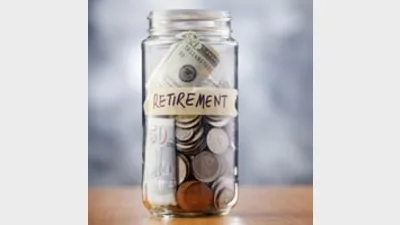Retirement income – how much is enough?



Dimensional Fund Advisors' Gerard O’Reilly believes the focus of retirement planning should move from savings in the abstract to consumption planning.
A major source of anxiety for many workers is uncertainty about whether they will be able to afford to retire comfortably.
In addressing this anxiety, much of the focus in traditional models is on building as big a lump sum as possible by the retirement age of 65 or so.
Perhaps a more realistic alternative is to come at the problem from the other end and model instead how much income a household might need in retirement. From this, a required level of savings can be targeted that will satisfy the desired standard of living.
Against this background, we examined the actual spending patterns of thousands of US households and modelled the impact of different patterns of investment returns and changes in income.
Using this information, we created a framework for understanding how much income a household might need in the years after leaving the workforce.
While the study was confined to the US, the questions raised by the research are also relevant for Australia.
The key findings of this study were as follows:
- The range of income required to maintain the same standard of living is much wider than commonly assumed. Dimensional’s US research suggests the assumed range of pre-retirement income needed to maintain the same standard of living is far too narrow. Given how much individual circumstances can differ, our study indicates that anywhere from less than 60 per cent to more than 80 per cent of pre-retirement income may be needed to maintain the same living standard.
- Higher earners cut spending in retirement, while poorer households didn’t. The typical household with an annual income of $50,000 or above reduced total spending by about 10 per cent or more in retirement, and spending declined with age. Households with income below $50,000 held spending roughly constant. Higher earners spent less on housing and work-related expenses. Interestingly, total discretionary spending (the amount spent on items such as holidays, entertainment, hobbies, and charity) actually rose for all income groups as people aged.
- Most households need to consistently save 10 per cent – 15 per cent of income through the working years. Simulation results based on actual patterns of investment returns and income changes showed that households need to target savings rates of 10 per cent – 15 per cent. Even low-income households – where the age pension can replace a significant proportion of their pre-retirement income – still need savings rates in the low double-digits.
Background
Maintaining the same standard of living in retirement doesn’t necessarily require 100 per cent of pre-retirement income.
Both economic theory and common sense suggest that maintaining the same standard of living in retirement doesn’t necessarily require 100 per cent of pre-retirement income. Typically, tax rates are lower and there is no longer a need to put income into savings.
Academic research over the past four decades has shown that household spending peaks around age 45-50 and then declines steadily as people age.
While there are likely many factors at work, we wanted to rule out insufficient financial resources as the primary reason for the decline.
Breaking down non-durable spending into categories and then by household income and age reveals that total discretionary spending rose for all income groups as people aged.
This suggests that a lack of financial resources isn’t the driving force behind the spending decline, as these would likely be the first things cut if money was tight.
Where did the decline in spending come from? In part, retirees tend to spend less on food.
Earlier research shows that older households spend more time shopping, thus paying lower prices for the same items. Work-related expenses such as clothing and transport decline.
And among homeowners, there was a large reduction in housing expenses because, typically, homeowners have paid off their mortgages by the time they retire.
This last point leads to another key finding: The typical household with an annual income of $50,000 or above reduced spending by about 10 per cent or more as they transitioned into retirement.
In contrast, households with income below $50,000 held spending roughly constant.
What does this mean in terms of savings rates?
After examining spending needs in retirement, the Dimensional study simulated income and portfolio paths for 10,000 households.
Pay raises and portfolio outcomes were drawn from changes in real per-capita income and real stock and bond returns over the period from 1930–2010.
Working years were assumed to be from 25 to 65, retiring at 66. Portfolios were invested in a mix of stocks and bonds that gradually became more conservative.
The study assumed that households with below-median final incomes would want to replace 100 per cent of their net pre-retirement spending (gross income less savings and taxes), while above-median households would want to replace 90 per cent of their net pre-retirement income.
The question was what savings rates are needed to achieve this spending level with a reasonable level of confidence (75 per cent to 90 per cent probability)?
The results suggest that households that consistently save throughout the working years need to target savings rates of 10 per cent – 15 per cent.
Even low-income households – where the age pension replaces much of their pre-retirement income – still need savings rates in the low double-digits.
While that number might seem high, it’s not far off from observed behaviour. Among active defined contribution participants, median total contribution rates (including both the employee and employer contributions) range from 8 per cent to 12 per cent, depending on income level.
Conclusion
Since many people do not start saving at the beginning of their careers, or save consistently throughout their working years, there is a high real-world risk of coming up short of the income needed in retirement.
We believe the focus of retirement planning should move from savings in the abstract to consumption planning.
An Australian Treasury study on the adequacy of Australian retirement incomes (released in 2011) estimates the average spending replacement rate for retirees here at just over 60 per cent, and projects it to rise to 80 per cent in around 20 years.
The Australian Government has not set an explicit benchmark replacement rate, but many commentators have said a net rate of between 65 to 80 per cent would be adequate.
Gerard O’Reilly is head of research, Dimensional Fund Advisors.
Recommended for you
Unregistered managed investment scheme operator Chris Marco has been sentenced after being found guilty of 43 fraud charges, receiving the highest sentence imposed by an Australian court regarding an ASIC criminal investigation.
ASIC has cancelled the AFSL of Sydney-based Arrumar Private after it failed to comply with the conditions of its licence.
Two investment advisory research houses have announced a merger to form a combined entity under the name Delta Portfolios.
The top five licensees are demonstrating a “strong recovery” from losses in the first half of the year, and the gap is narrowing between their respective adviser numbers.











